
I may not have travelled extensively but I suspect that Thailand may be the capital of crazy cables. Tangled messes of overhead wires that just keep growing over time. Sometimes they are not even overhead and have to be ducked under.
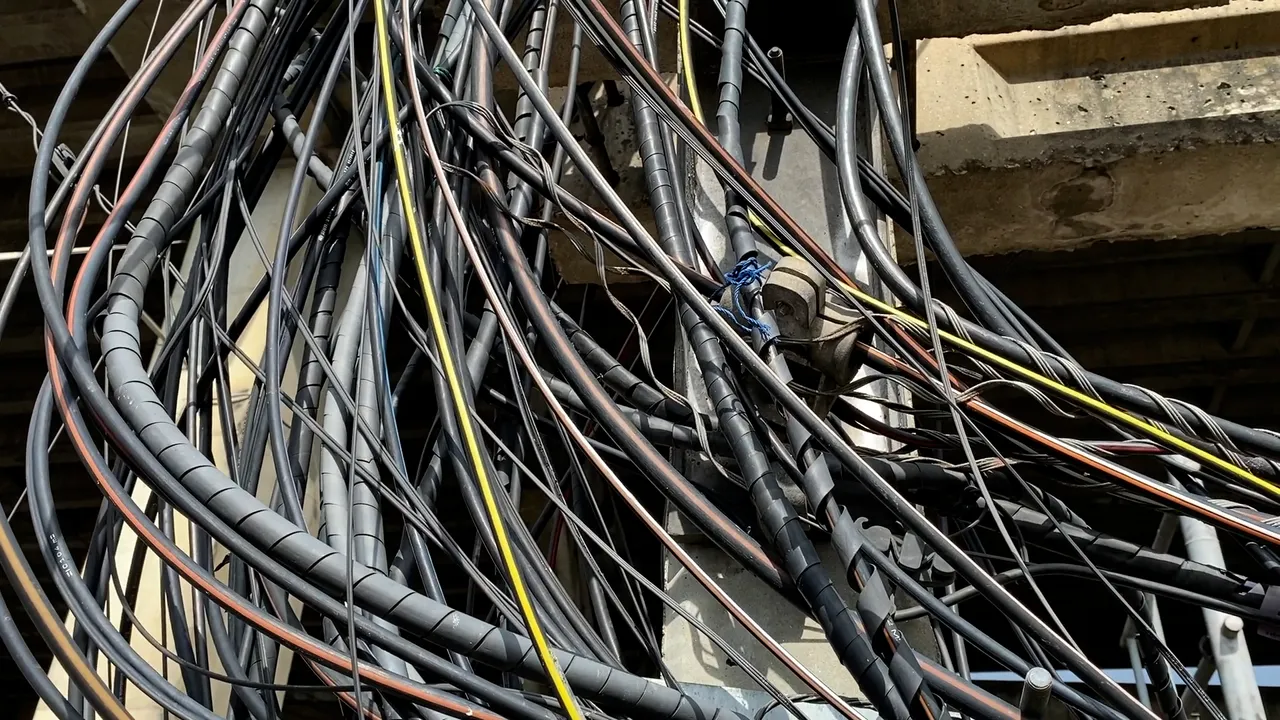
The poles plus bare cables are quite reminescent of leafless trees and birds seem to agree with me as they readily use them as nesting sites.
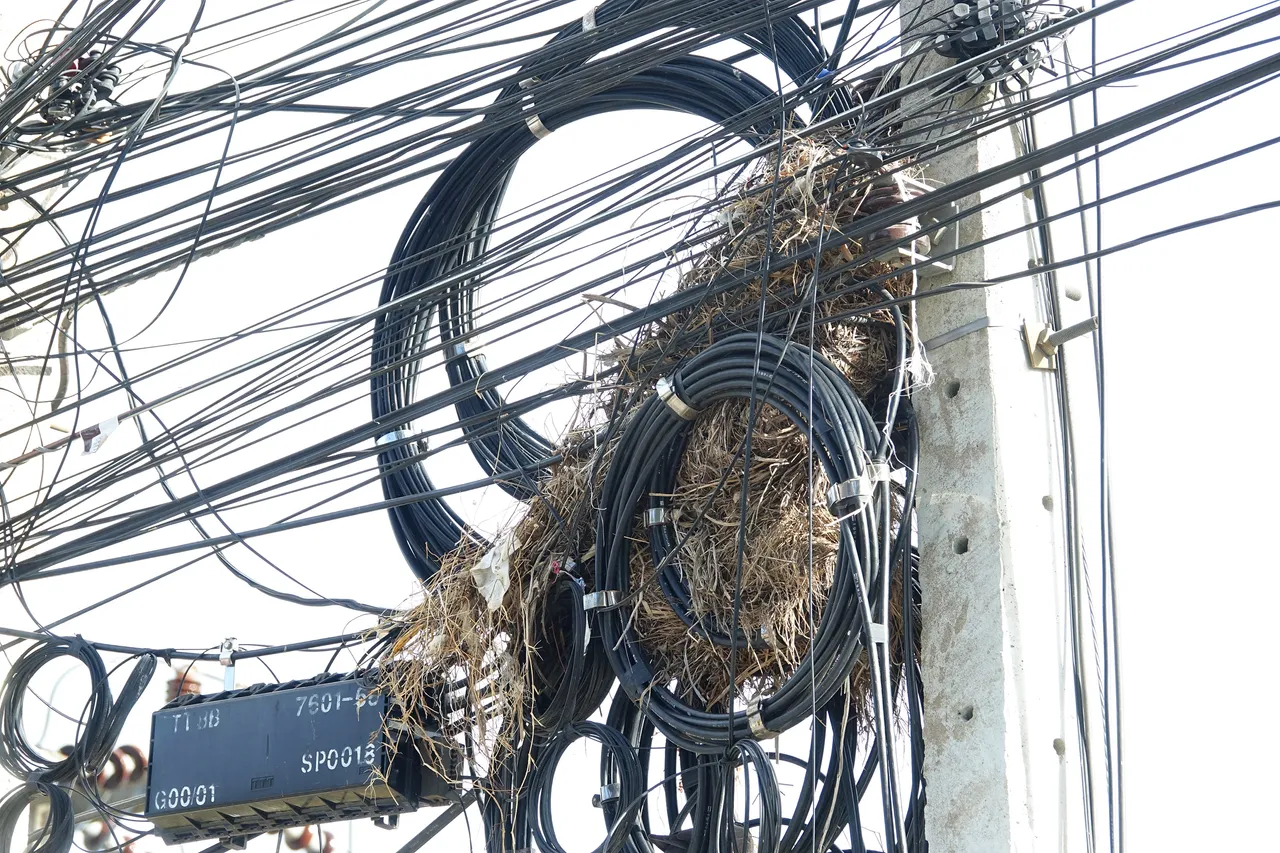
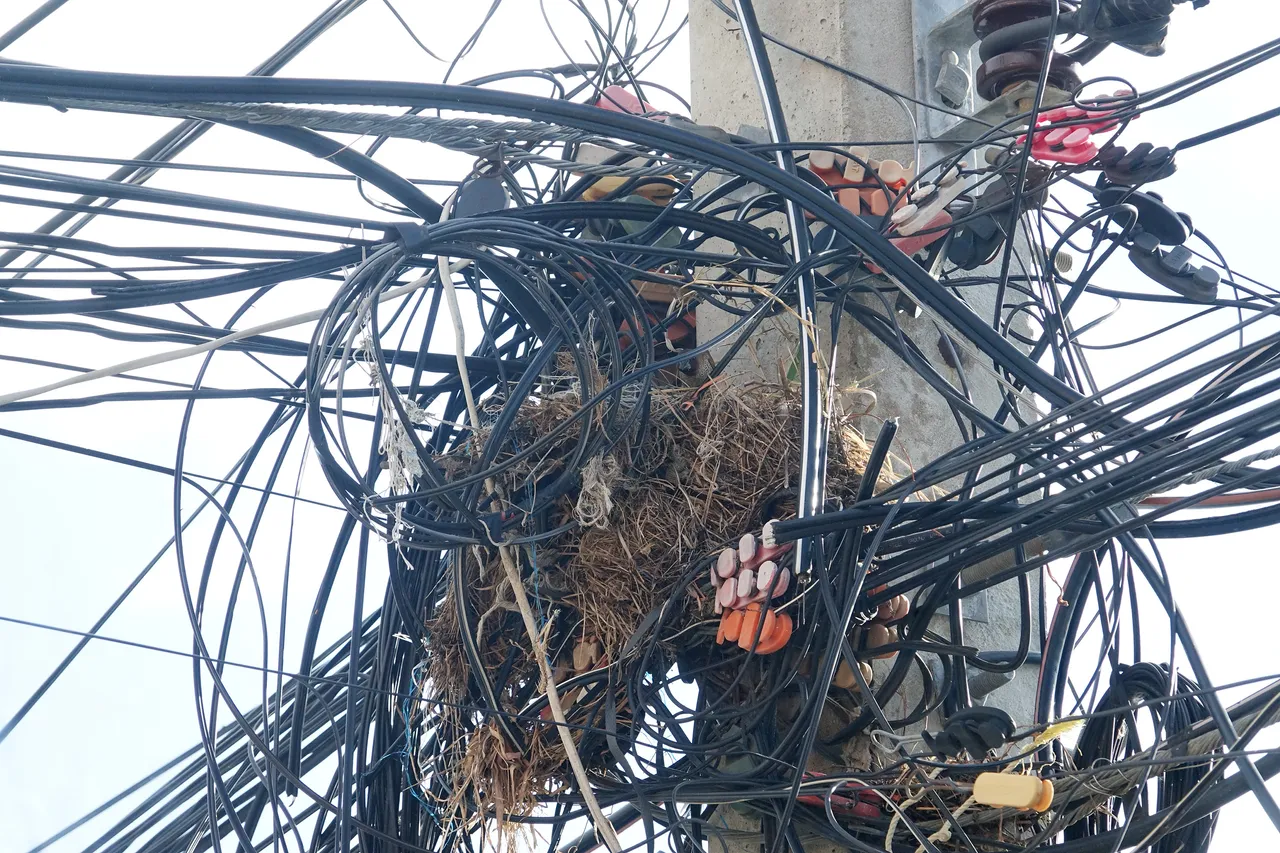

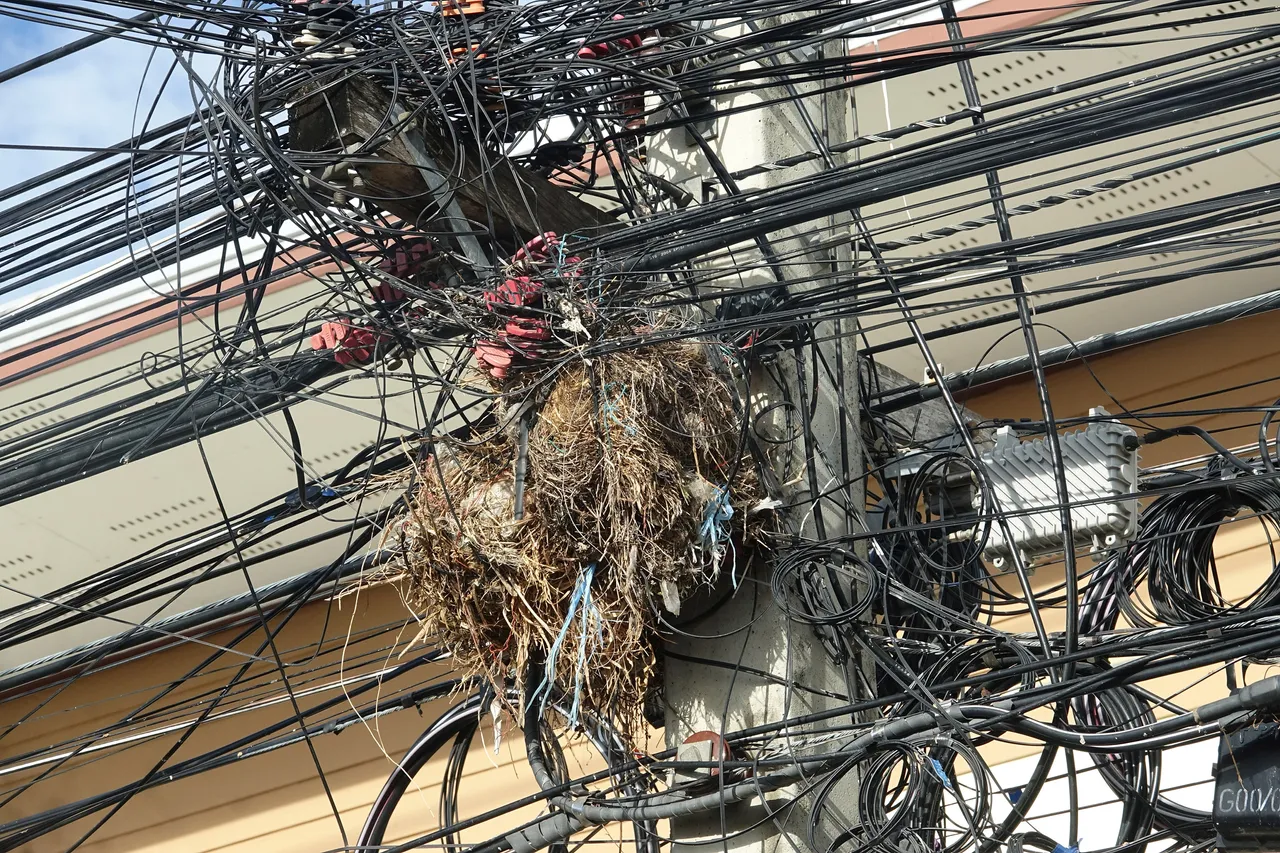
Substantial balls of grass become permanent fixtures growing in volume as each new breeding season comes along. I found one stretch of road in Petchaburi town, which had an impressive number of nesters. I surveyed it carefully and along a 500m stretch there was a pole being used by nesting birds every 30m, that's 17 nest-poles in half a kilometre! And often there were two or three different species using the same pole at the same time in one fused construction like an avian condominium.
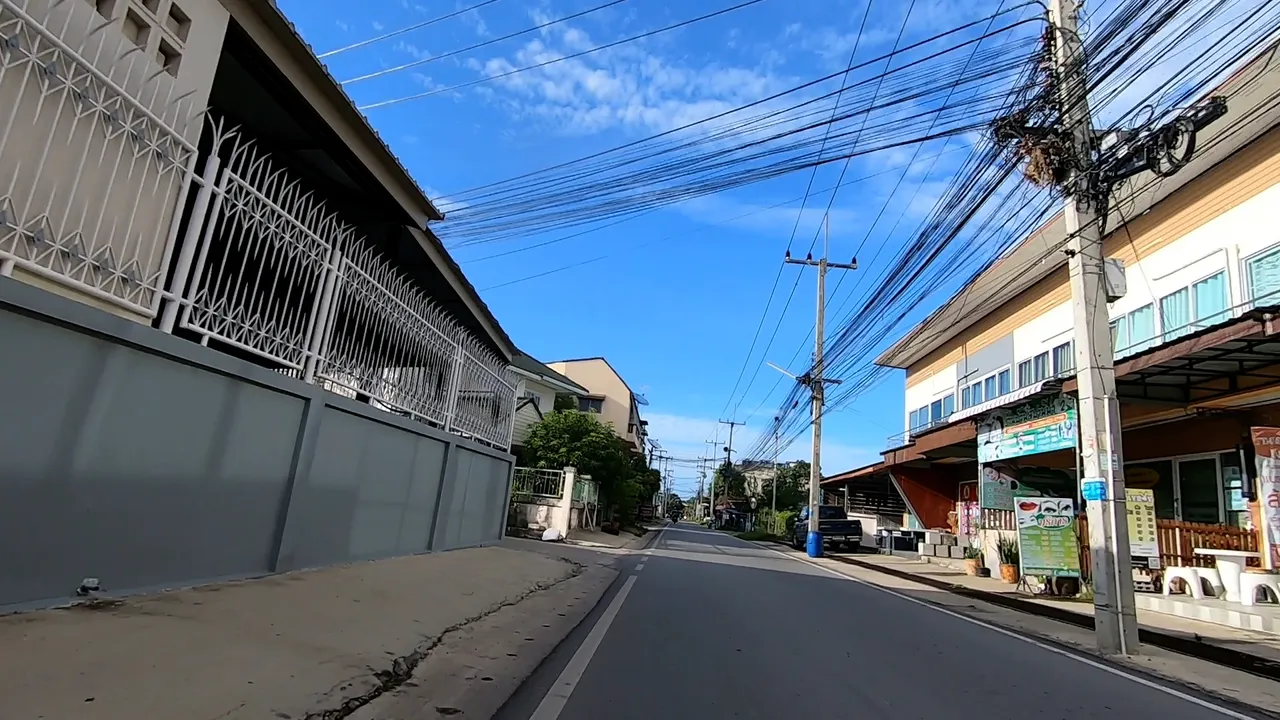
I found Tree Sparrows, House Sparrows, Rock Pigeons, Red Turtle-Doves, Great Mynas, Asian Pied Starlings and Scaly-breasted Munias, with a couple of other candidates who I didn't manage to confirm. I'm not expecting to find any rarities in such exposed positions so close to humanity but I love how our "garden" birds continually find ways to adapt to our increased urbanisation.
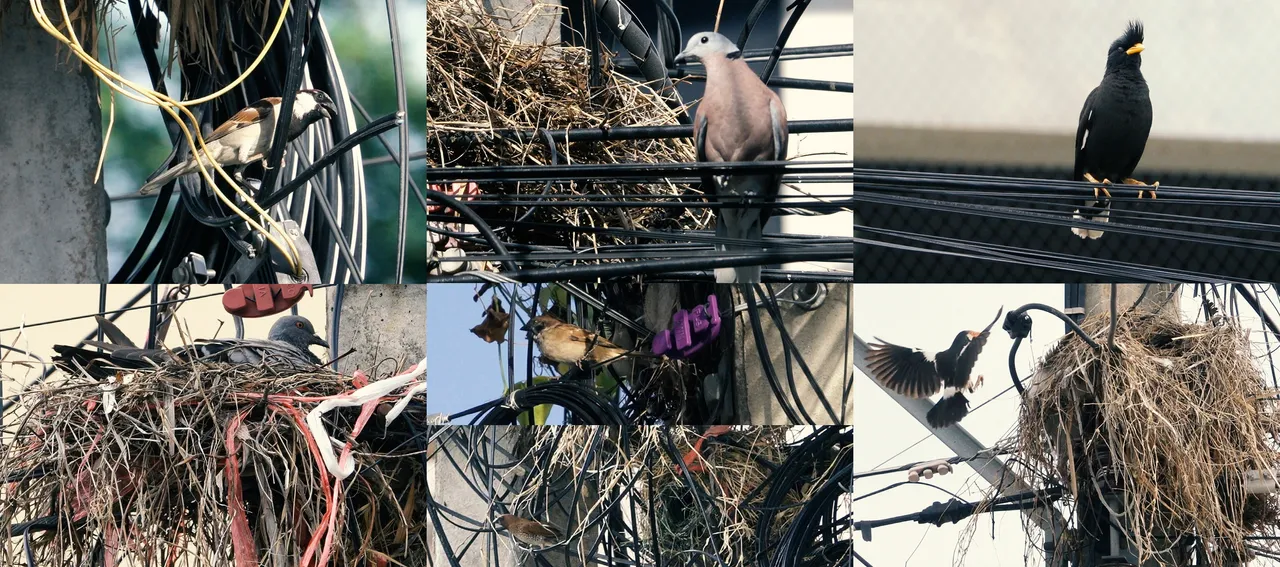
These urban birds love the crazy cables as a secure and rigid nesting site with human activity keeping predators away whilst also providing plenty of feeding opportunities through the edible waste we casually spread around. And the more people there are then the more tangled the wires become. There were actually one or two trees around but as far as I could see they were only used as perches with the cables preferred for nesting.

Interestingly, it was quite noticeable that although they were happy with all the traffic and passersby so close, they were still sensitive to being looked at. Sometimes they were clearly wary at entering their nest with me watching them but quite relaxed with people walking right underneath as long as they didn't stop and look up.
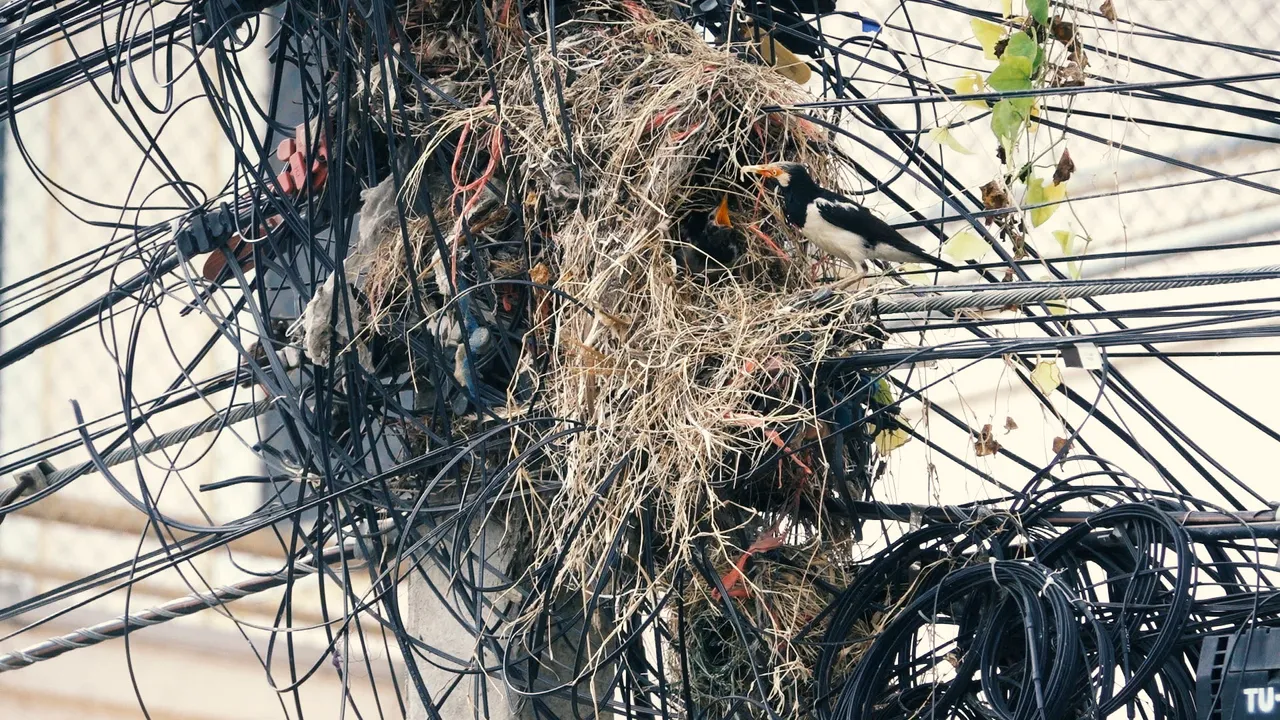
I assume these nest balls of dry grass must be a fire risk but I've seen no efforts to remove them so next year I plan to re-visit that stretch of road to see who else has moved into the bird community.

